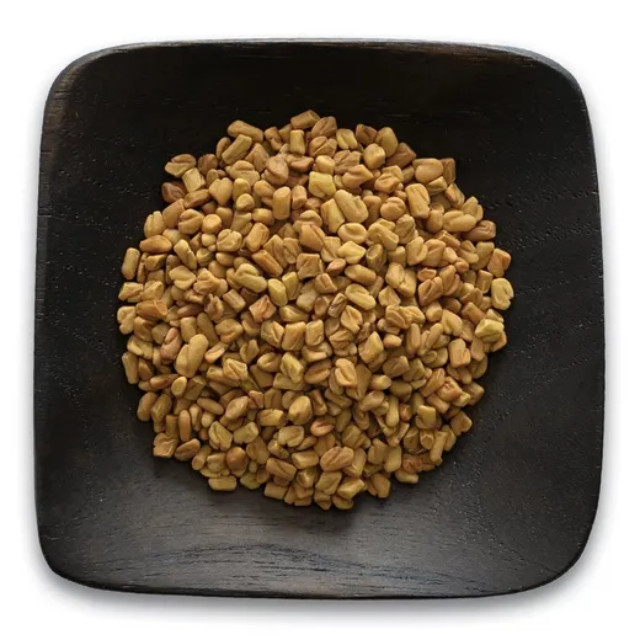Fenugreek
Fenugreek
Couldn't load pickup availability
Fenugreek offers a slightly bitter, nutty flavor that is essential in many Indian and Middle Eastern spice blends like garam masala. It pairs wonderfully with curries, stews, and vegetarian dishes. Rich in protein and fiber, fenugreek is also known for its health benefits, particularly in supporting digestive health and blood sugar regulation.
Packaging: 4 oz Shaker Mason Jar
History: Fenugreek is an ancient herb with Mediterranean and Asian origins. It has been used for thousands of years, particularly in Indian and Middle Eastern cuisine, where it plays a key role in curry blends and other flavorful dishes. It has long been valued for its medicinal properties, especially for promoting lactation and digestive health.
Tasting Notes:
Fenugreek has a unique, slightly bitter taste with a warm, nutty, and mildly sweet flavor. Its flavor profile is complex, combining hints of maple, curry, and roasted nuts, making it a distinctive addition to both savory and sweet dishes. Fenugreek’s bitterness is softened by its earthy, aromatic qualities, which bring depth and warmth to any recipe.
Aroma:
The aroma of fenugreek is strong, with a sweet, almost maple-like fragrance mixed with earthy, slightly bitter undertones. When ground, fenugreek releases its signature aroma, which is both warming and rich, adding an aromatic depth to dishes that is distinct and inviting.
Characteristics:
Fenugreek is an herb from the pea family (Fabaceae) and its seeds are commonly used in cooking. The seeds are small, golden-brown, and somewhat angular in shape. When used whole, fenugreek seeds have a crunchy texture and a strong flavor, while ground fenugreek has a finer texture and is more potent. The plant itself is native to the Mediterranean and Western Asia, and its seeds are widely used in culinary applications around the world.
Perfect Pairings:
Fenugreek pairs well with spices like cumin, coriander, turmeric, ginger, and chili peppers. It complements foods such as lentils, chickpeas, potatoes, and tomatoes, and is a staple in Indian, Middle Eastern, and North African cuisines. Fenugreek also works well with yogurt, meats (especially chicken and lamb), and rich, creamy dishes like curries, stews, and soups.
Substitutions:
If you don’t have fenugreek, you can substitute with a mix of mustard seeds and a touch of maple syrup to mimic its slightly bitter, sweet flavor. Alternatively, you can try using a combination of celery seed and a pinch of curry powder to achieve a somewhat similar taste. While no substitute is exactly the same, these alternatives can help replicate fenugreek's complex flavor.
Ideal Uses:
Fenugreek is perfect for use in spice blends like curry powder, garam masala, and pickling spices. It is commonly used in Indian dishes such as dal (lentils), curry, and chutney. Fenugreek is also essential in certain North African and Middle Eastern recipes, where it enhances stews, meat dishes, and vegetables. It can be added to bread, soups, and sauces for a unique, aromatic flavor. Additionally, fenugreek leaves (known as methi) are used fresh in some cuisines to flavor dishes like parathas or used in cooking greens.
Processing Method:
Fenugreek seeds are typically used either whole or ground into a powder. Whole seeds are often toasted or roasted to enhance their flavor before being added to dishes. Ground fenugreek, which has a more concentrated flavor, is used in spice blends, sauces, and curries. Fenugreek leaves can also be used fresh or dried, though they are less commonly used than the seeds.
Botanical Name:
Trigonella foenum-graecum – Fenugreek is derived from the Trigonella foenum-graecum plant, a member of the pea family. It has been cultivated for thousands of years and is native to the Mediterranean region, though it is now grown widely around the world. Fenugreek seeds and leaves are used in both culinary and medicinal applications due to their distinct taste and numerous health benefits.





